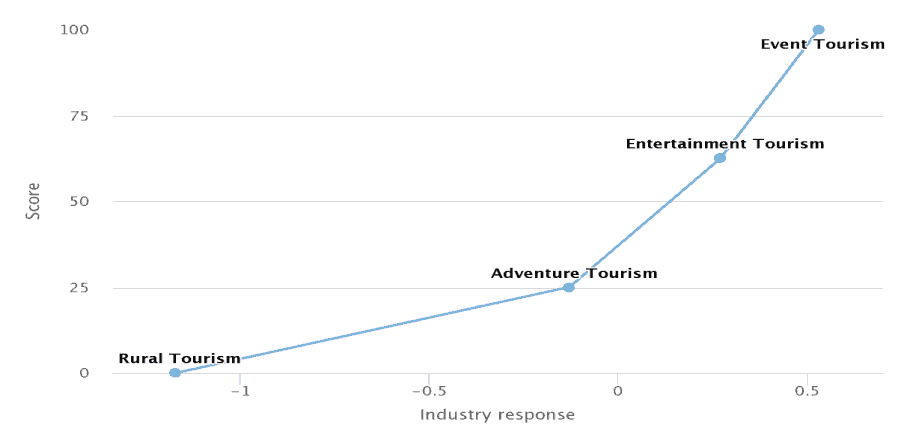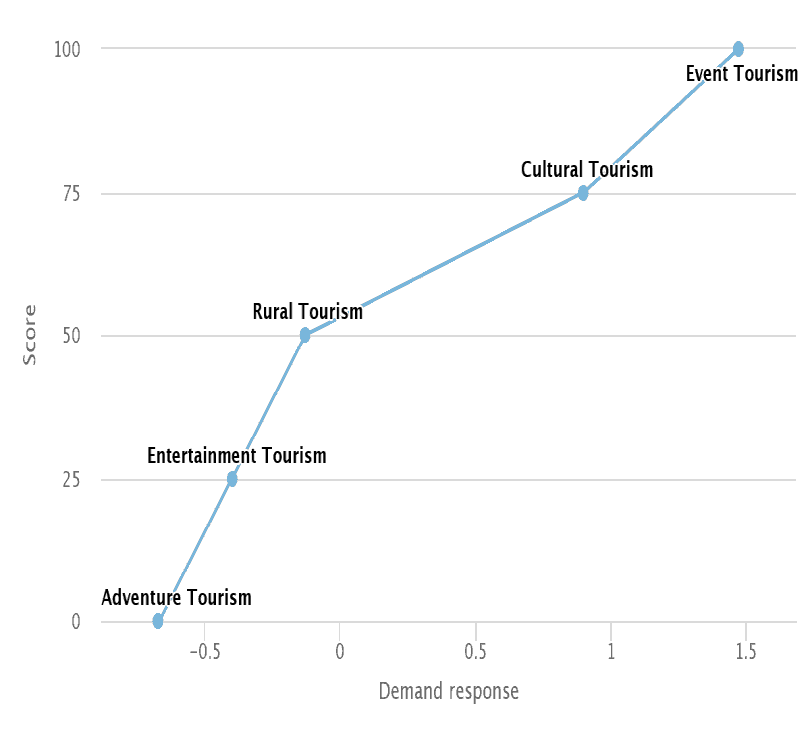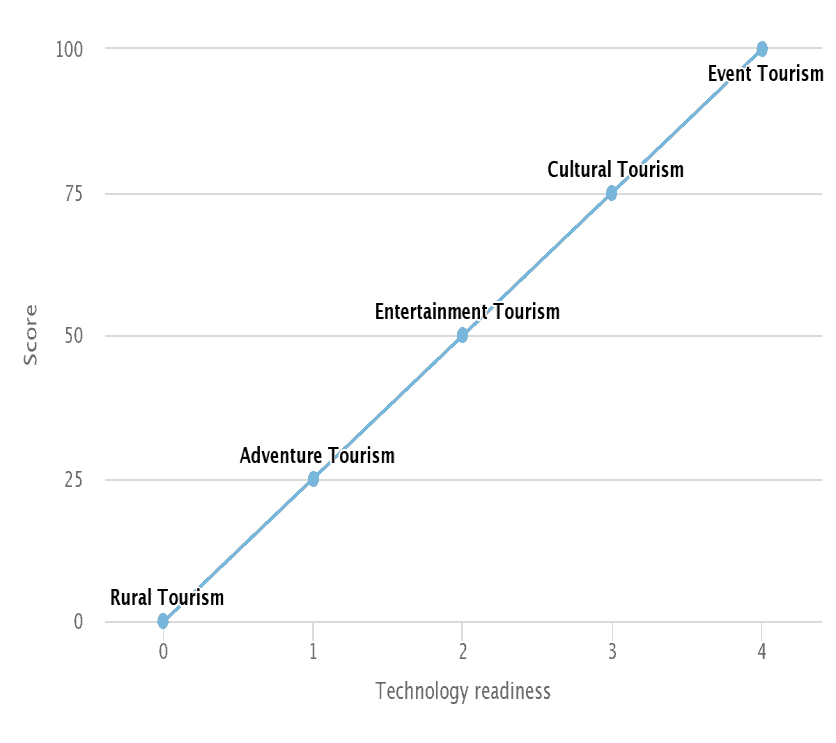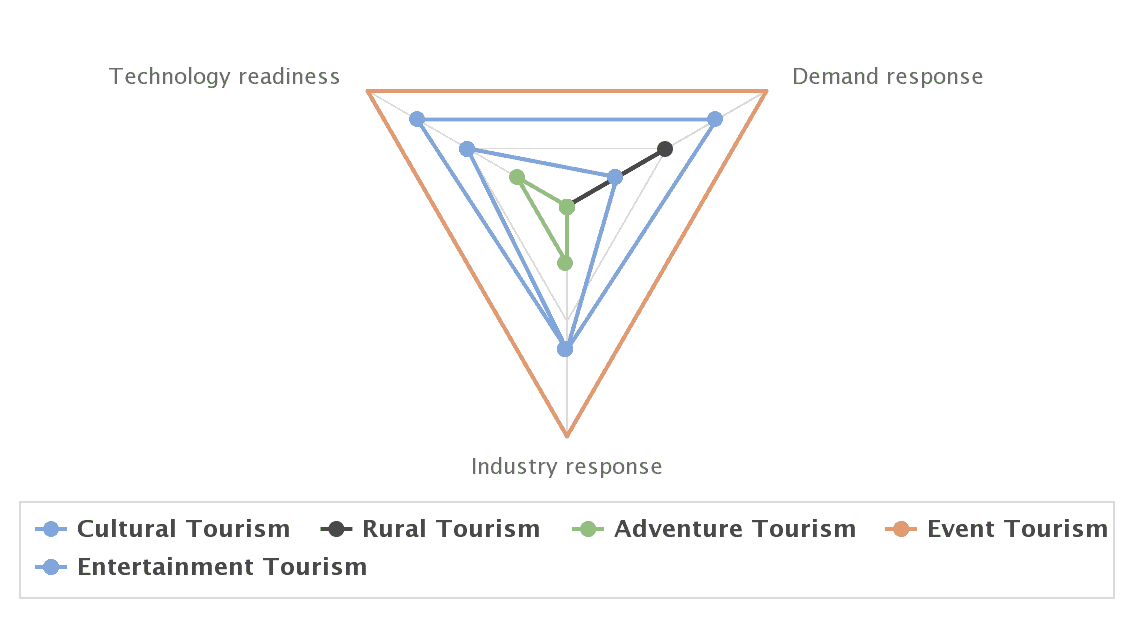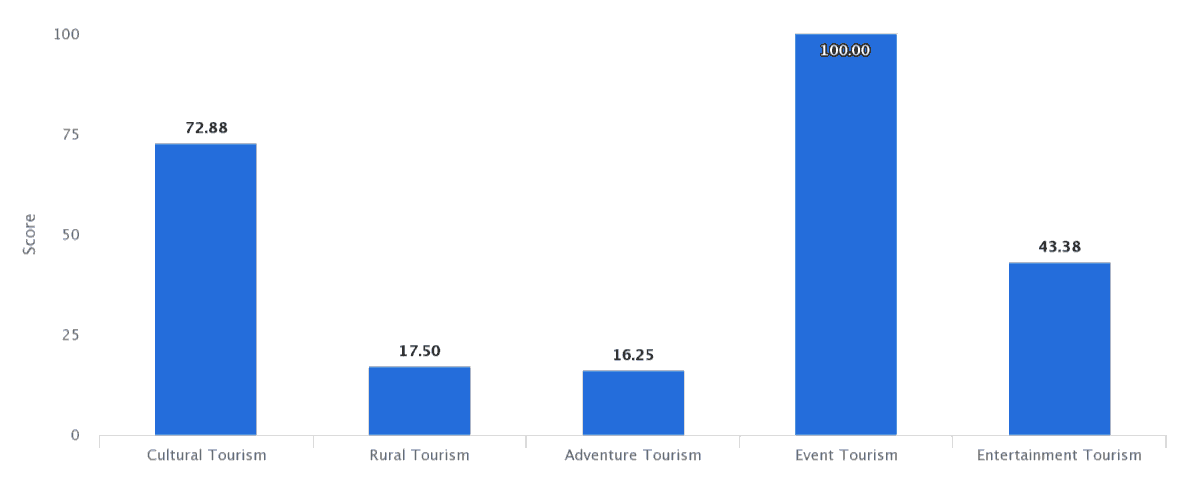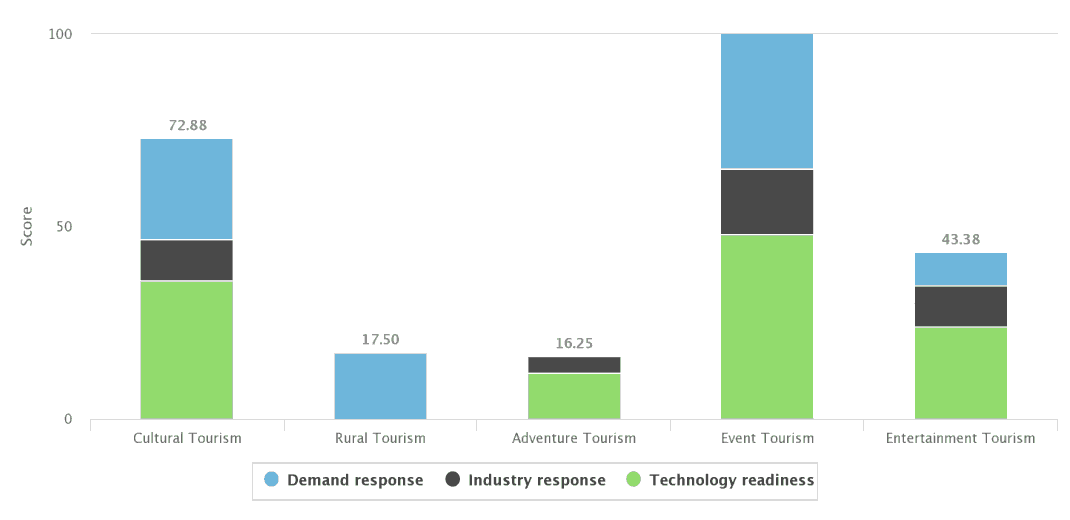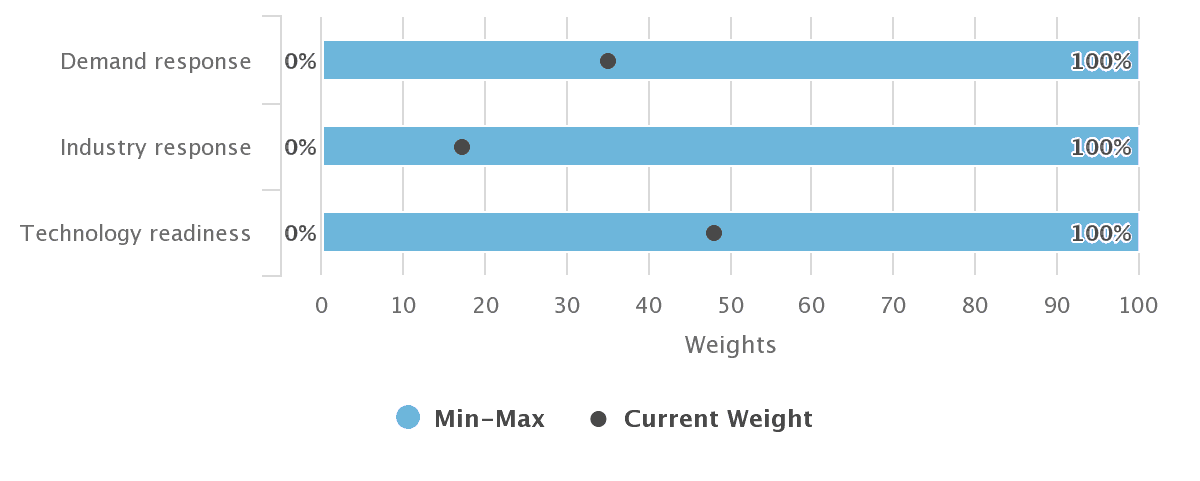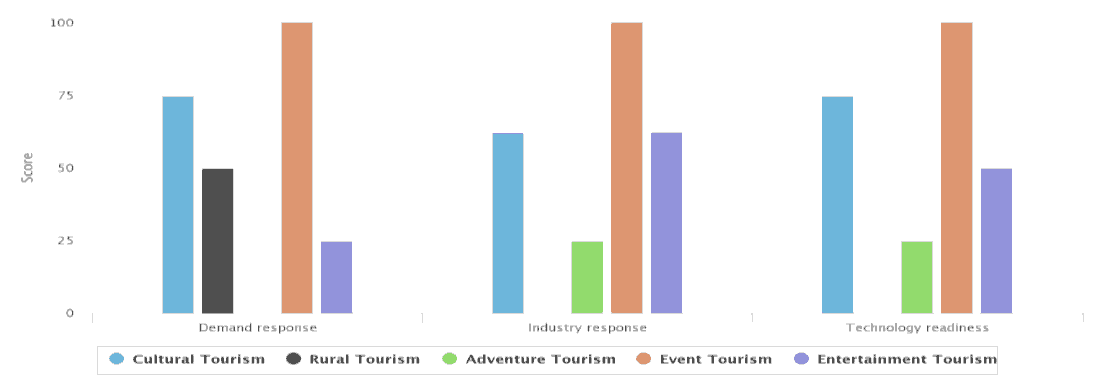Research Article: 2021 Vol: 20 Issue: 2S
Influence of Readiness Measures on Planning Tourism Digital Shift
Shahryar Sorooshian, University of Gothenburg
Noor Azlinna Azizan, Prince Sultan University
MD Yusof Ismail, International Islamic University Malaysia
Keywords:
Tourism, Covid-19, Industrial Revolution.
Abstract
Industrial revolution 4.0 is pushing industries toward digitalization including tourism. Although as almost all modes of tourism are currently declining as a result of the new COVID-19 pandemic, information and technology is expected to play a role not just during, but also after, the crisis. As a result, the aim of this letter is to formulate a strategic framework for readiness measures for this digitalization transition and see the dependency of the defined measures in tourism industry. Hence, a PROMETEE-based program was used to demonstrate that the top ready clusters for digital tours are not sensitive to the weights of specified readiness measures. This analysis can be used to direct transition planning for top ready tourism clusters.
Introduction
Lately, numerous industries, including tourism, are affected by the 4th industrial revolution (industry 4.0) (Ozturk, 2020). Over the German-speaking world, the relevance of Industry 4.0 has been noted. Indeed, it has emerged as a critical topic on the 2016 World Economic Forum agenda (Sorooshian & Panigrahi, 2020). This revolution is enabled by the introduction of advanced technologies such as information technology (Teck, Subramaniam & Sorooshian). The tourism growth has and benefited from this revolution (Pencarelli, 2020). The combined effect of industry 4.0 and current COVID-19 pandemic has led to some rapid changes in tourism. Tourism 4.0 with a reduction in the adverse impact caused by the industry such as transportation carbon emission; moreover, there is a need to utilise information technology to enhance the tourist experience (Peceny, Urbancic, Mokorel, Kuralt & Ilijaš, 2019). The industry must react quickly to address the pandemic challenges as it has led to a steep reduction in tours and travel (Gretzel et al., 2020; Higgins-Desbiolles, 2020). Research (Peceny et al., 2019) indicate that this is a critical issue because even small changes in the tourism sector have a massive impact on society. This reduction in travel and tourism has led to increased mental health issues such as anxiety, depression, and mood disorders that are critical issues from a public health perspective and therefore, there is an urgent requirement to conduct research concerning the mental pressure attributable to pandemic (Holmes et al., 2020; Schuch et al., 2020). Although the risk of illness spread is found to be a significant impediment to traveling during the disease outbreak, those who did travel even during the crisis typically mentioned being healthy, wealthier, and in a better mood than non-travelers. They also confirmed that they have improved their stress control, as well as their courage and hope for the future (miragenews, 2020).
This pandemic, with the guidance of the industry 4.0, has given a huge boost to the use of information technology. (Garfin, 2020; Laungani et al., 2020). Moreover, A recent report (Chamarro, 2020) indicates that information technology employed extensively during the pandemic by individuals will define how individual lives are transformed after the pandemic has passed. Another recent report (Garfin, 2020) suggests that the raging pandemic has led to the assessment of core principles for enhancing diligent technology use to reduce the adverse effects of stress in modern life. Implementing information technology is advantageous because it improves service accessibility at a lower cost but with greater performance. (Häfner, Härting & Kaim, 2020). Tourism clusters vary in their readiness for transition. As a result, it is anticipated that providing digital tours would be prioritized during the post-pandemic era. In this respect, we choose three measures to assess market readiness for transition. Technology readiness, demand response, and industry response are three elements used to apply Multi-Criteria Decision Analysis (MCDA) strategies such as AHP, PROMETHEE, VIKOR, ELECTRE, WSM, and others. As a result, the primary goal of this article is to contrast tourism diversity, especially in terms of and the role of the defined three criteria for the commenting on the digitalization readiness during and after the pandemic.
Methodology
Preference Ranking Organization Method for Enrichment Evaluations (PROMETHEE) is a ranking technique where there are countable alternatives that should be ranked subject to the specified criteria, which may be conflicting. This is a well-established MCDA methodology, and many academics and scholars have concentrated on and used the PROMETHEE decision-making framework (Behzadian, Kazemzadeh, Albadvi & Aghdasi, 2010; Brans & De Smet, 2016). Unlike many other MCDAs, the PROMETHEE approach has a simple definition and implementation. (Behzadian et al., 2010). There are a few technical options for this technique; one of these is the D-Sight collaborative decision-making (CDM) platform, which is available at http://www.d-sight.com. D-Sight CDM is a Java-based decision-making platform created at the University of Brussels (Université Libre de Bruxelles) in Belgium. It has been providing decision-making solutions since 2010 (Hayez, De Smet & Bonney, 2012). The web-based trial version of the software was utilized for this study. This tool is formulated to use PROMETHEE with supplementary support of multi attribute utility theory.
Results
Once the required data were collected from experts, the selected CDM tool was used for computing several aspects like mean of normalized average, decision criteria weights using all data provided by the expert panel, industry response (17), demand response (35), and technology readiness (48). The expert panel concluded that, on average, technology readiness should receive a higher level of importance, followed by demand response, but industry readiness bears far less weight in judging digitalization readiness.
However, Figure 1, 2 and 3 are the software output for showing the decision criteria differences for the chosen tourism sectors respectless of the given criteria weights.
Figure 4 depicts the results generated using the web application. These results are generated with consideration of Figure 1,2, and 3. Lastly, Figure 5 lists the tourism ranking hierarchy, varying from ready to be digitalized. Result of this figure is with taking the criteria weightage into the calculations and presented the event tourism is the readiest cluster for a shift to be a digitalized service industry.
Figure 6 shows the contribution of each criterion in the decision-making. This figure is showing that although rural tourism and adventure tourism receive low but near scores from the calculations, the reason behind the scores are not similar. Majority of the archived score for the adventure tourism was due the technology readiness, but the scores of the rural tourism in just received from its positive demand response. This figure also shows that the tourism industry (service providers), in general and in comparison to the demand (travelers), is not very supportive of the change. This less support from the industry can be motivated by the loosing financial benefits of traditional traveling, such as hotel businesses, transportation firms, etc. On the other hand, travelers may be satisfied even if they could get their traveling motivation through a virtual travel. From technology perspective, the result explains that the rural tourist still need to wait for advancement of the current technology. Events can be virtual or online as even now many of business events, conferences and some sport events are among many other live online events.
As it depicted in Figure 7, the first ranked tourism cluster is not sensitive to the received weights for the defined readiness criteria. Even if experts doesn’t show a general agreement on the criteria weights, the top rank result won’t change. As Figure 8 presents, respectless of the criteria weight simulation, event tourism has top support from all the three readiness measures. Even from both Figure 4 and 8 it is motivated that the cultural tourism is also not depend on the readiness criteria weights
Conclusion
The findings show that the analyzed tourism clusters tend to have varying levels of preparation for digital transformation. However, in this analysis, an enhanced PROMETEE-based program was used to demonstrate that the top ready clusters for digital tours are not sensitive to the weights of specified readiness measures. This augmented sensitivity study can be used to direct transition readiness for event and cultural tourism industry groups relevant to domestic and inbound Swedish tourism. Nonetheless, an unbalanced policy orientation could have an effect on the viability of these clusters' transition.
Acknowledgments
Acknowledgment: The authors thank professional consultation given by Mr Quantin Hayez who is managing partner at D-Sight. They acknowledge the grant provided by the center for tourism (university of Gothenburg). Last, but not the least, they should thank Prince Sultan University for covering the publication fees.
References
- Chamarro, A. (2020). Psychosocial impact of COVID-19: Some evidence, many doubts to be clarified. Aloma: Journal of Psychology, Education and Sports Sciences, 38(1).
- Garfin, D.R. (2020). Technology as a coping tool during the coronavirus disease 2019 (COVID-19) pandemic: Implications and recommendations. Stress and Health, 36(4), 555-559.
- Gretzel, U., Fuchs, M., Baggio, R., Hoepken, W., Law, R., Neidhardt, J., ... & Xiang, Z. (2020). E-Tourism beyond COVID-19: A call for transformative research. Information Technology & Tourism, 22, 187-203.
- Häfner, F., Härting, R.C., & Kaim, R. (2020). Potentials of digital approaches in a tourism industry with changing customer needs–a quantitative study. Paper presented at the 2020 15th Conference on Computer Science and Information Systems (FedCSIS).
- Higgins-Desbiolles, F. (2020). Socialising tourism for social and ecological justice after COVID-19. Tourism Geographies, 22(3), 610-623.
- Holmes, E.A., O'Connor, R.C., Perry, V.H., Tracey, I., Wessely, S., Arseneault, L., ... & Everall, I. (2020). Multidisciplinary research priorities for the COVID-19 pandemic: A call for action for mental health science. The Lancet Psychiatry.
- Laungani, R., Chen, I., Lui, C., Gong, J., Yoo, D., & Miyamoto, J. (2020). The impact of COVID-19 on media consumption across north asia. Nielsen. Com.
- Miragenews (Producer). (2020). Holidays could be answer to COVID blues: research.
- Ozturk, H.M. (2020). Technological developments: Industry 4.0 and its effect on the tourism sector. In Handbook of Research on Smart Technology Applications in the Tourism Industry, IGI Global, 205-228.
- Peceny, U.S., Urban?i?, J., Mokorel, S., Kuralt, V., & Ilijaš, T. (2019). Tourism 4.0: Challenges in marketing a paradigm shift. Consumer Behavior and Marketing, 1-19.
- Pencarelli, T. (2020). The digital revolution in the travel and tourism industry. Information Technology & Tourism, 22(3), 455-476.
- Schuch, F.B., Bulzing, R.A., Meyer, J., Vancampfort, D., Firth, J., Stubbs, B., ... & Calegaro, V. C. (2020). Associations of moderate to vigorous physical activity and sedentary behavior with depressive and anxiety symptoms in self-isolating people during the COVID-19 pandemic: A cross-sectional survey in Brazil. Psychiatry research, 292, 113339.
- Sorooshian, S., & Panigrahi, S. (2020). Impacts of the 4th industrial revolution on industries. Walailak Journal of Science and Technology (WJST), 17(8), 903-915.
- Teck, T.S., Subramaniam, H., & Sorooshian, S. (2019). Exploring challenges of the fourth industrial revolution. International Journal of Innovative Technology and Exploring Engineering, 8(9), 27-30.
